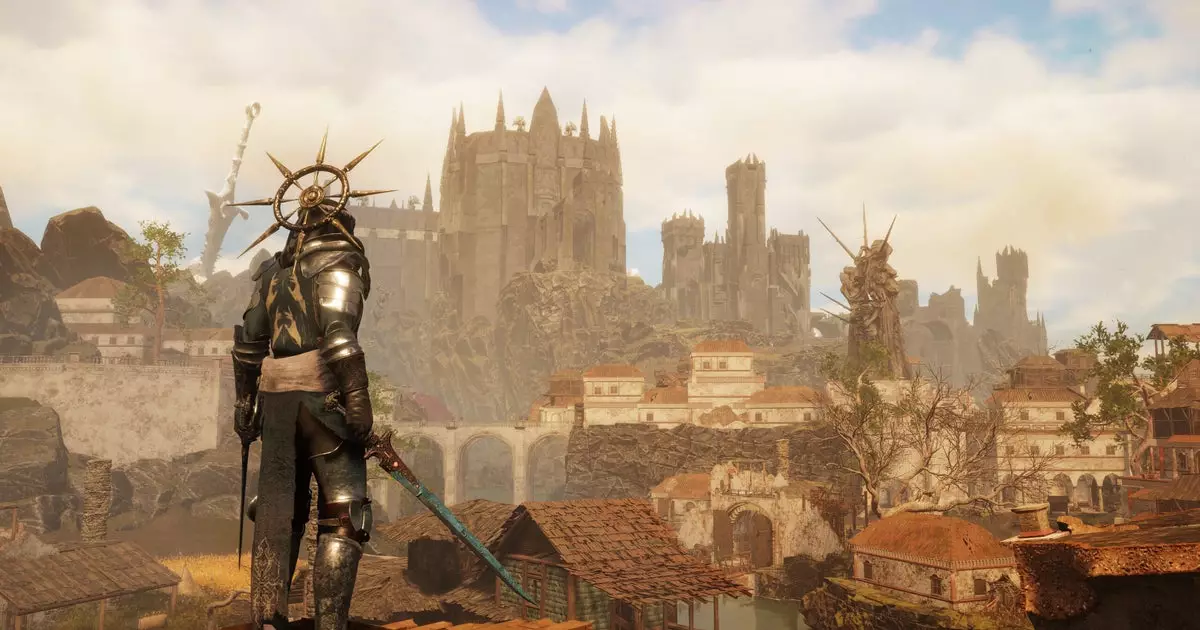In the vast expanse of fantasy RPGs, where players often find themselves returning to established titans like Skyrim or the recent Oblivion remakes, there lies a treasure waiting to be unearthed: Tainted Grail: The Fall of Avalon. This title emerges as a compelling alternative for those seeking to escape the clutches of mainstream gaming’s monoliths. The latest buzz suggests that this game might serve as a refreshing respite, especially for players interested in immersive open-world experiences devoid of the typical corporate backing. With an Overwhelmingly Positive rating on Steam and a budding reputation, it’s time to delve deeper into what makes this game tick.
A Richly Woven Narrative Steeped in Arthurian Legend
Set in the aftermath of King Arthur’s demise, Tainted Grail: The Fall of Avalon transports players to a realm marred by despair and decay. Spanning approximately 600 years since the legendary hero’s tragic exit, the game unfolds in a world rife with plague, strife, and division among its territories. The setting navigates through three distinct zones, immersing players in an environment that feels both achingly familiar and painfully new. It draws its narrative threads from a reimagined Arthurian mythos, offering an experience that promises depth and intrigue, even if coded in shades of gloom.
While the allure of dark themes captures interest, it’s the purportedly expansive gameplay that takes center stage. With claims of 50 to 70 hours of content, laden with over 200 side quests and various engaging activities—from home decoration to sketchbook journaling—the game appears set to entice players into its immersive embrace. However, one can’t help but wonder how these diverse mechanics will manifest in practice. Will the sketchbook be a mere add-on, or could it blossom into a fully fleshed-out avenue for creativity within a gaming framework?
The Chaotic Nature of Wyrdness
At the core of Tainted Grail is the concept of Wyrdness—a primordial energy that surges in intensity as night falls. This element introduces a layer of complexity to gameplay; the environment alters, foes becomes fiercer, and survival becomes paramount under moonlight’s gaze. As the game unfolds, players will have to contend with not only the threats from towering beasts and vengeful spirits but also the deteriorating conditions of their surroundings—an ingenious gameplay mechanic that heightens the stakes and keeps players on their toes.
While the concept of nighttime challenges is not entirely novel in gaming, the interplay between narrative and mechanics stands to offer a unique flavor. One can imagine scenarios where the anxiety of nighttime prowling might bring about harrowing encounters that linger long after the console is switched off.
Character Customization and Diverse Playstyles
The ability to craft one’s hero in Tainted Grail has been touted as a key feature. The game purports to offer a wide array of playstyles, allowing players to assume roles as imaginative as an alchemist-berserker or a stealthy archer lurking in the dark. While this versatility is appealing, the modern gaming landscape is fraught with titles that make similar promises—often resulting in superficial implementations of complex mechanics.
Yet, there’s a certain charm in how the game presents itself; it boldly dares players to channel their inner chaos as they navigate monstrous foes with whatever arsenal they can conjure. This invitation to unorthodox play could be a defining draw for players hungry for creative freedom within a structured narrative framework.
Art Direction and Immersive Environment
One cannot overlook the art direction that Tainted Grail employs. Using an “everlasting autumn” theme, the visuals draw parallels to the works of studios like FromSoftware, evoking a sense of melancholic beauty amid decay. The environments feel alive, brimming with detail that mirrors the catastrophic decay besetting Avalon. In an industry where polish often trumps originality, the game seems to embrace its imperfections as part of its identity.
This aesthetic extends to the overarching plague, dubbed the Red Death, which not only heightens the stakes but also deepens the narrative complexity. The desperate measures taken by priests to cure those afflicted reveal moral ambiguities that compel players to question the nature of goodness in a world overcome by evil. The ideas flirt with the idea of ethics versus survival—an engaging setup that can lead fascinating player reflections.
Tainted Grail: The Fall of Avalon emerges as a compelling contender in the adventurous landscape of RPGs. By blending rich narrative frameworks with dynamic gameplay and evocative art, it potentially carves out a niche that defies conventional gaming paradigms, offering players an enticing dark journey that tugs at both their hearts and their strategic minds.

